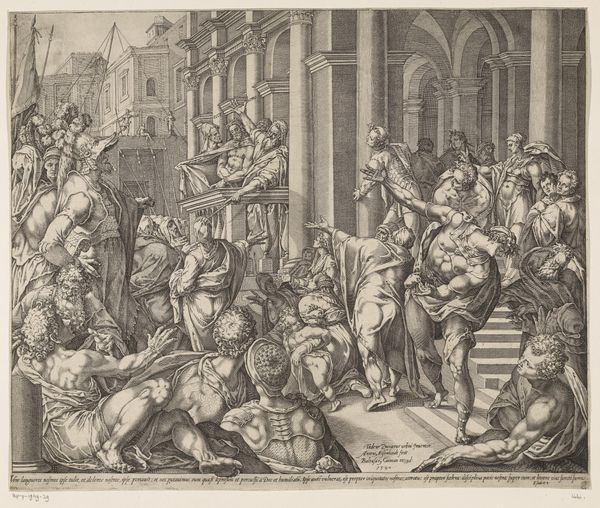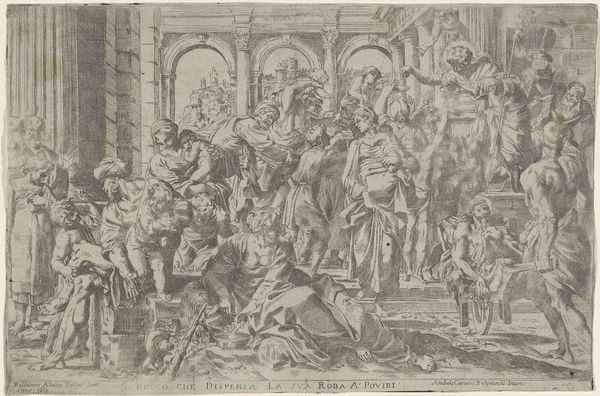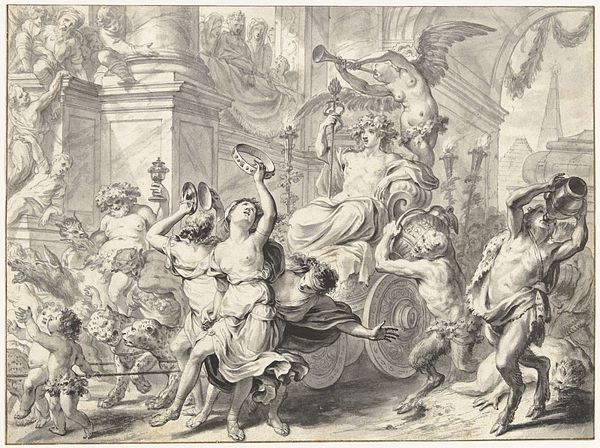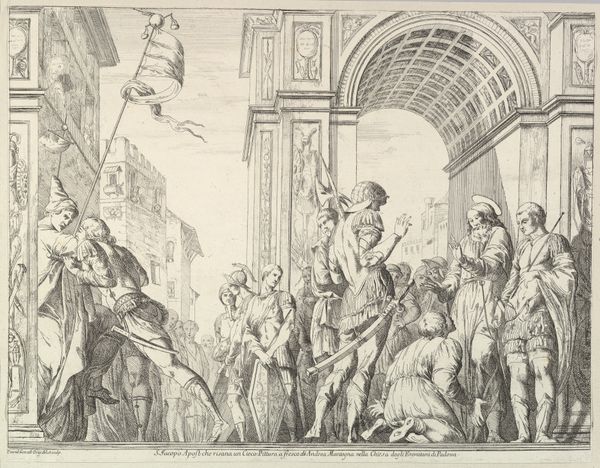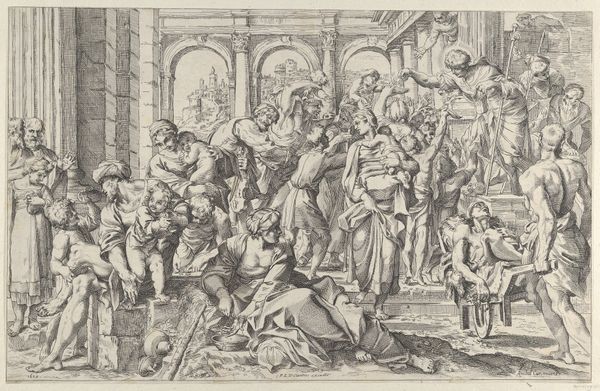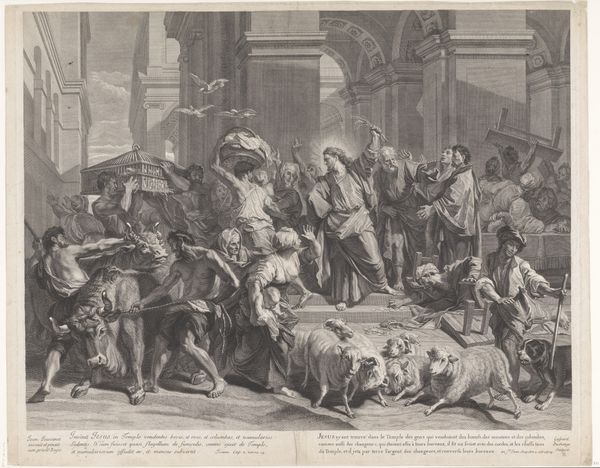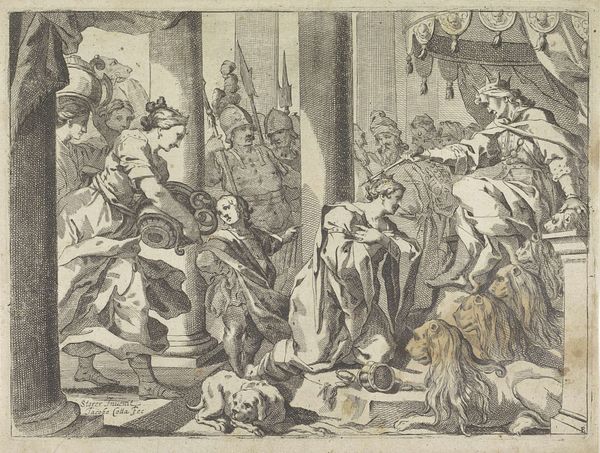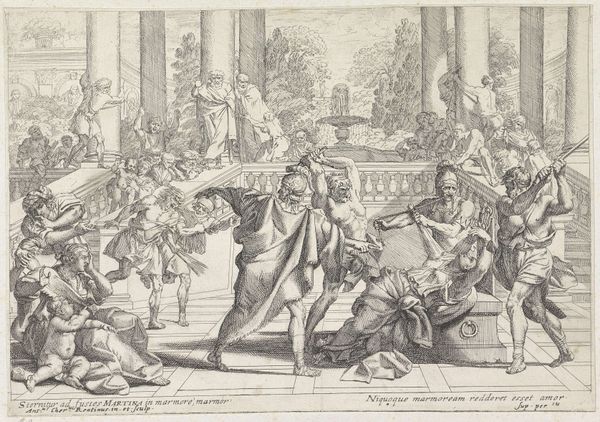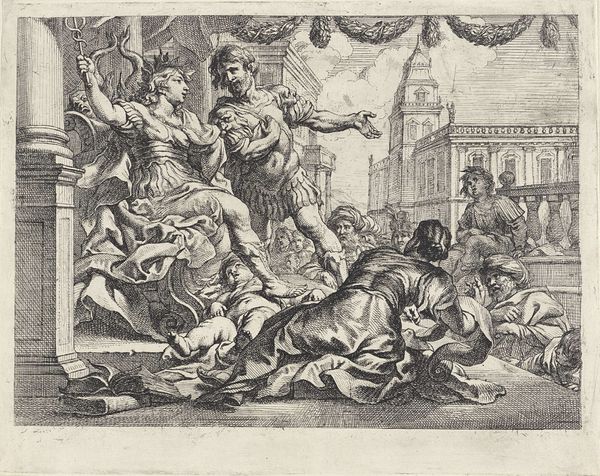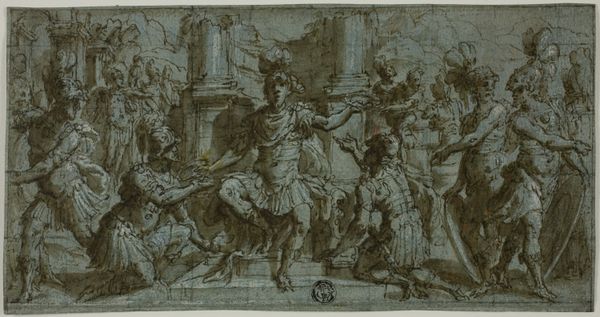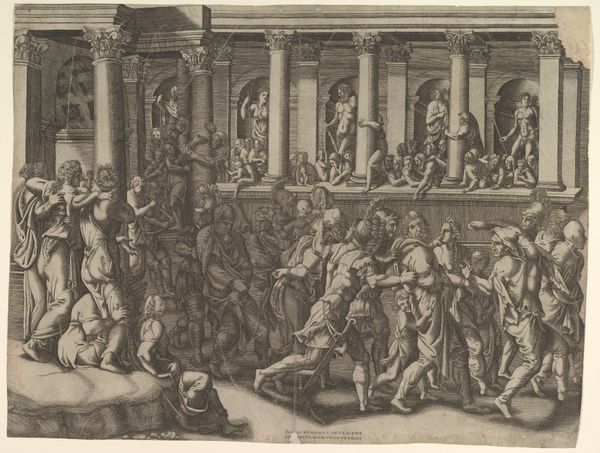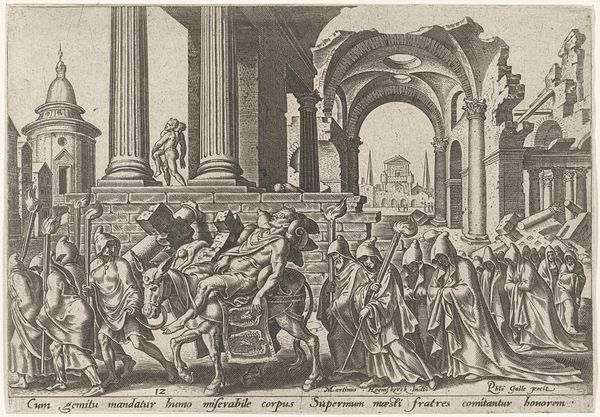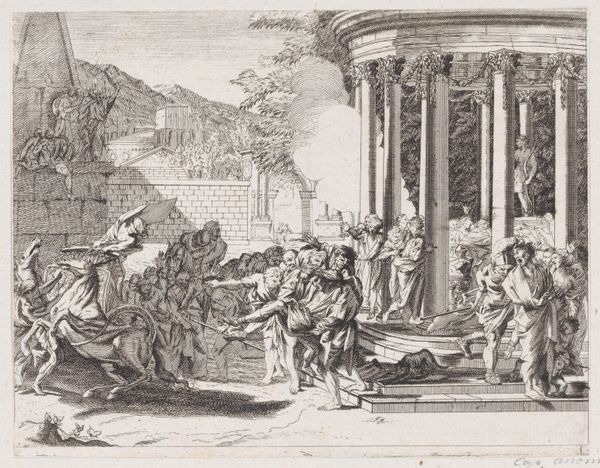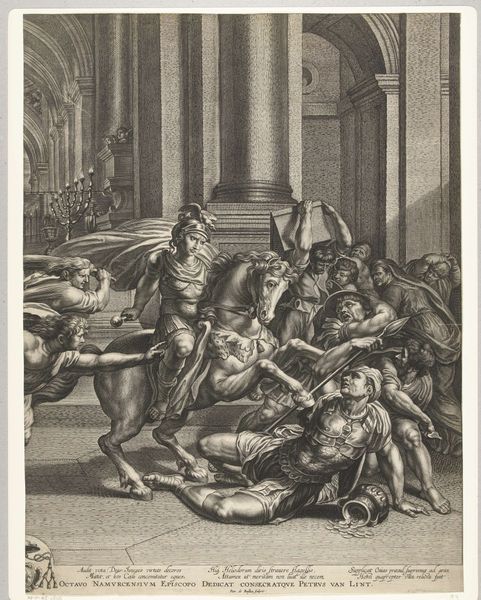
drawing, ink, pen
#
drawing
#
ink drawing
#
narrative-art
#
baroque
#
figuration
#
ink
#
pencil drawing
#
pen-ink sketch
#
pen
#
portrait drawing
#
history-painting
Dimensions: height 178 mm, width 234 mm
Copyright: Rijks Museum: Open Domain
Editor: Here we have Godfried Maes’ pen and ink drawing, "Perseus Showing the Head of Medusa," sometime between 1659 and 1700. The scene is dramatic and the composition dynamic. The figure of Perseus dominates the foreground, but the violence is unsettling. What do you see when you look at this piece? Curator: I see a confluence of classical mythology and Baroque sensibilities, reflecting the power dynamics and artistic conventions of the period. The drama you noticed is so important. Baroque art was frequently employed as propaganda; how might that influence how we understand an image like this? Editor: Propaganda, interesting… Do you mean that Maes was making a statement beyond simply illustrating a myth? Curator: Precisely. Consider the role of the church and the aristocracy during this period. Grand narratives, like the Perseus myth, were often used to reinforce the existing power structures. Think about it, the tale speaks to the triumph of a hero, blessed by the gods, over a monstrous, disruptive force, it resonates deeply with the sociopolitical climate. Do you notice the architectural elements in the backdrop? Editor: Yes, the columns make it seem staged somehow, lending to that dramatic feel I mentioned earlier. Curator: The architectural setting isn’t just decorative. It’s consciously evoking classical antiquity to align Perseus, and by extension, whoever might commission this artwork, with the grandeur and authority of the ancient world. Furthermore, look at how Medusa’s severed head is presented: not as a gruesome trophy, but as a symbol of vanquished chaos. Editor: So, it’s about legitimizing power through a glorified retelling of myth. Seeing it that way, the violence does seem less about raw emotion and more about making a calculated point. Thanks, that was really insightful! Curator: My pleasure! It's vital to remember that art never exists in a vacuum. Examining it with an understanding of its social context truly enriches the viewing experience.
Comments
No comments
Be the first to comment and join the conversation on the ultimate creative platform.
